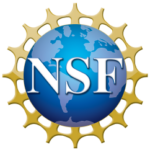Robert Noyce Teacher Scholarship Program
Bridging Pathways for the Preparation of Highly Qualified Mathematics and Science Teachers.

Overview
Fall applications will be reviewed through July 30th.
Spring applications will be reviewed through December 20th.
The Bridging Pathways for the Preparation of Highly Qualified Mathematics and Science Teachers project (Bridging Pathways), in partnership with Spartanburg Community College (SCC), will provide scholarships to 21 students pursuing a dual undergraduate mathematics or science (biology or chemistry) degree and secondary education degree. These students will receive an $11,688 scholarship each year for three years of their five-year program beginning in their junior year. In addition, there will be three different internship experiences available for underclassmen at USC Upstate and SCC to work with middle and high school students.
Goals
The goal of the Bridging Pathways scholarship and stipend program is to increase the number of mathematics and science majors who become secondary mathematics and science teachers serving high-needs school districts. The program objectives are to 1) increase the number of STEM majors who also pursue a secondary teaching degree by 50% annually and raise awareness of STEM education fields among community college students by providing internship opportunities early in their degree program; 2) develop curricular and extracurricular programming that supports the transition of community college students, prepares mathematics and science scholars to meet the needs of diverse populations as classroom teachers, and helps retention of pre-service Noyce scholars; and 3) monitor and support new secondary mathematics and science teachers as they transition into the classroom so that 100% remain in high-needs teaching positions within six years of initial job placement.
Contact
For more information, please contact:
Dr. Stephen Bismarck (sbismarck@uscupstate.edu) or Mr. Kelly Crow (kcrow2@uscupstate.edu)
The Robert Noyce Teacher Scholarship is funded by the National Science Foundation. This material is based upon work supported by the National Science Foundation under Grant No. (ID 1950204). Any opinions, findings, and conclusions or recommendations expressed in this material are those of the author(s) and do not necessarily reflect the views of the National Science Foundation.
